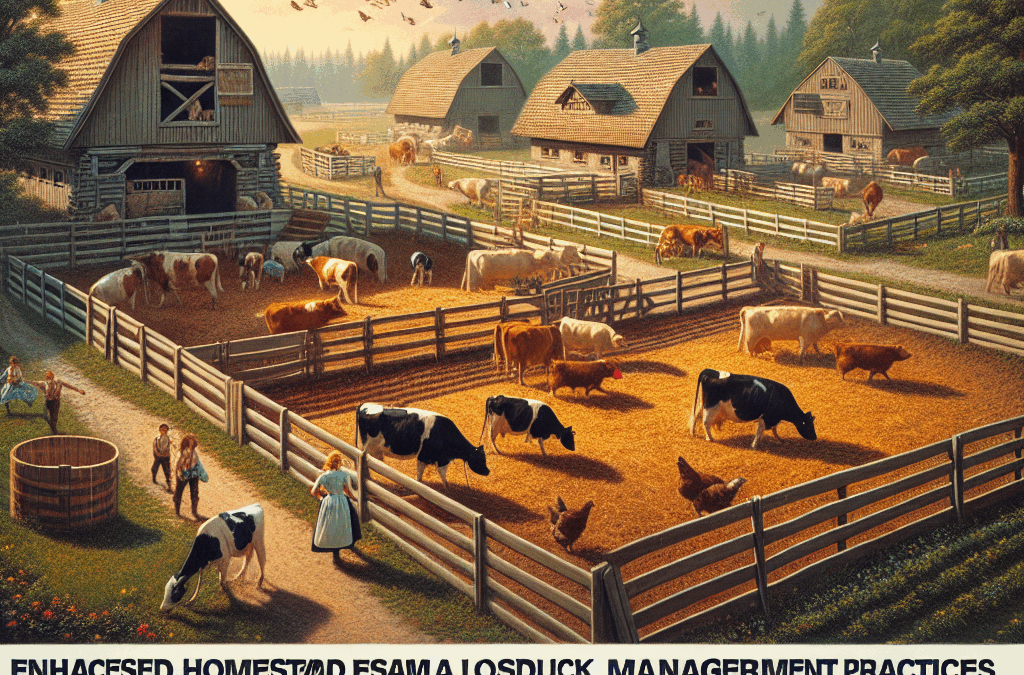Feeding and Nutrition
Understanding Livestock Diets
When it comes to feeding your livestock, the saying “you are what you eat” definitely rings true. I’ve learned that understanding the specific nutritional needs of each type of animal is key to their health and productivity. For instance, cattle require a different balance of proteins, fats, and carbohydrates compared to goats or chickens. You’ll want to tailor their diets accordingly.
It’s also worth noting that animals have different nutritional requirements at different stages of their lives. Young animals, pregnant or lactating females, and those in peak production all need extra care in their diet. If you struggle here, consider consulting with a vet or animal nutritionist to craft a diet plan that keeps your animals thriving.
Lastly, always keep an eye on forage quality. Grazing animals depend on their pasture quality. If your grass isn’t up to snuff, your livestock won’t be either. Regularly rotating pastures is a practice I find invaluable—it allows the grass to recover, providing better food and reducing parasite loads.
Health Management
Regular Health Check-Ups
Just like us, livestock needs regular health check-ups. I’ve built the habit of scheduling these at least twice a year. During these visits, veterinarians can catch early signs of diseases and other health issues before they become serious. It’s a proactive step that pays off big time.
Vaccinations are another critical aspect. That’s one thing I really emphasize in my homestead. Ensuring all my animals are up-to-date on their vaccinations has reduced illness in my flock and herd significantly. The peace of mind that brings is worth every penny.
Don’t forget about mental health, too! Animals that are stressed are more susceptible to disease. Keeping their environment clean and familiar, as well as providing enrichment, can help keep your livestock healthy and happy. I always try to observe their behavior for any signs of distress—it’s a small effort that makes a world of difference.
Housing and Shelter
Create a Safe Haven
Providing adequate housing for your livestock is one of the most fundamental aspects of good management. Trust me, I’ve made my share of mistakes here! I’ve learned that a cozy, clean, and dry environment keeps animals healthy and safe from the elements. Proper ventilation is crucial, too; it minimizes moisture and ammonia buildup inside the barn.
I also make sure to have enough space for each animal. Crowding can lead to stress and even aggression in some species. It’s always easier to inspect your livestock and maintain their health when they have room to roam and space to lay down. Think of it as their very own living room!
Lastly, consider the positioning of your shelters. Placing them in a location that naturally shields from prevailing winds and direct sunlight can help keep your animals comfortable in all seasons. I’ve picked up several tricks from fellow homesteaders, and environment is always key!
Breeding Practices
Choosing the Right Breeding Stock
When it comes to breeding, the goal should be to enhance the quality and health of your livestock. Selecting the right breeding stock is crucial, and I always do my homework before making any decisions. Look for animals that exhibit desirable traits, including health, growth rate, and temperament. Your herd’s future depends on the choices you make today!
Also, consider genetic diversity. I’m a firm believer that breeding within a limited gene pool can lead to issues down the road. Incorporating new blood to your stock can help strengthen resilience to diseases and enhance overall vigor.
Finally, responsible breeding practices are essential. Determine the best breeding times to ensure that babies are born in favorable conditions, whether that’s because of the season or simply to ensure that mothers are healthy and well-fed. This proactive approach minimizes stress and promotes healthier offspring.
Record Keeping
Maintaining Comprehensive Records
I can’t stress enough how essential record-keeping is in livestock management. Good records help you track detailed histories – everything from feed intake to breeding dates. It’s a treasure trove of information for making management decisions. Trust me, having a clear picture of your livestock’s history can save time and headaches down the line.
Data can also help in tracking health trends. If an illness strikes, having records enables you to trace it back to specific feed, conditions, or routines. I’ve set up a simple spreadsheet that logs all the pertinent information, and while it’s a bit of work, it pays off as the farm grows.
Finally, don’t overlook the importance of financial records. Understanding your costs versus returns can guide decisions related to breeding, feeding, and expanding your homestead. I keep track of expenses and sales to assess which areas yield the best return. It’s all part of running a successful operation!
FAQs
What are the main nutritional needs for different livestock?
Different animals have varying nutritional needs. For instance, cattle need bulky feed for digestion, while poultry requires a high-protein diet for egg production. Consulting a nutritionist can help customize diets for your animals.
How often should I have health Checkups for my livestock?
Regular health checkups are usually recommended at least twice a year. However, certain animals may require more frequent visits based on their specific health conditions or production status.
Why is shelter important for livestock?
Shelter provides protection from harsh weather, helps prevent injuries, and minimizes stress. A clean and dry environment is essential for maintaining good health in livestock.
What should I consider before breeding my livestock?
Before breeding, assess the health and genetic diversity of your breeding stock. It’s important to select strong, healthy animals to enhance your herd’s overall quality.
How do I keep effective records for my livestock?
Keeping detailed records can be as simple as maintaining a spreadsheet or diary. Track feed intake, health visits, breeding dates, and expenses to gain insights into your herd’s management.





